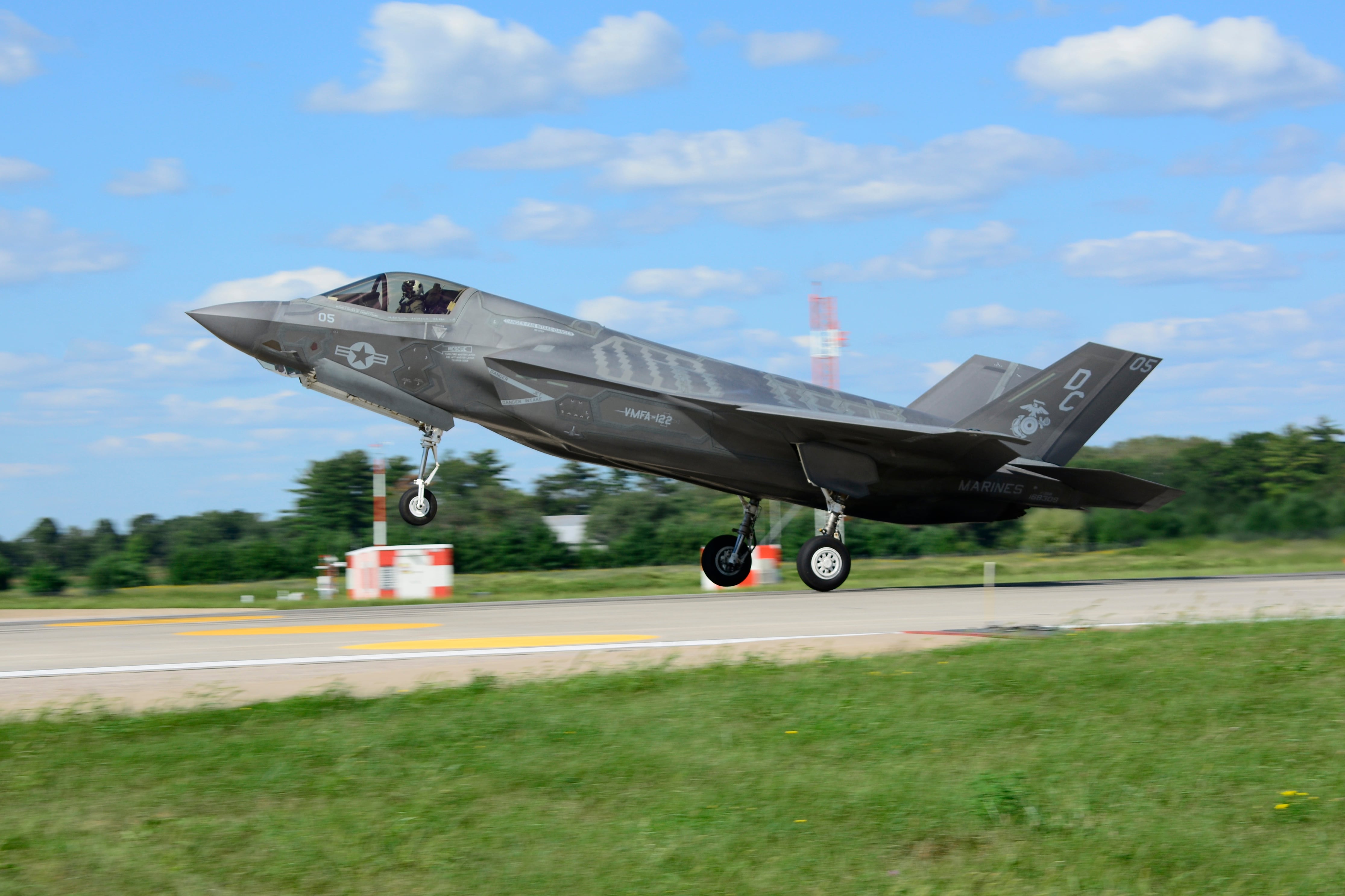WASHINGTON — The F-35 Joint Program Office has not adequately tracked government property leant or leased to Lockheed Martin and its subcontractors, an oversight that a new investigation by the Defense Department’s inspector general said could impact readiness.
Building the F-35 Joint Strike Fighter requires the use of government property such as materiel, special tooling like molds used to form the jet’s structure and unique test equipment.
Over the lifespan of the program, the F-35 JPO has not followed the mandated procedures used to manage government-furnished property, or GFP, and instead depended on Lockheed and its subcontractors to keep track of such equipment, stated a DoD IG report released Friday.
RELATED

“As a result, the DoD does not know the actual value of the F‑35 property and does not have an independent record to verify the contractor‑valued government property of $2.1 billion for the F‑35 program,” the report said. “Without accurate records, the F‑35 Program officials have no visibility over the property and have no metrics to hold the prime contractor accountable for how it manages government property.
“The lack of asset visibility restricts the DoD’s ability to conduct the necessary checks and balances that ensure the prime contractor is managing and spending F‑35 Program funds in the government’s best interest and could impact the DoD’s ability to meet its operational readiness goals for the F‑35 aircraft.”
The report claims the program office did not:
- Maintain a record of GFP known as an “accountable property system of record,” or APSR.
- Award contracts with complete GFP lists.
- Coordinate with the Defense Contract Management Agency on the contracting actions necessary to transition property from being “contractor acquired” to “government furnished.”
In short, “DoD officials failed to implement procedures … to account for and manage government property for more than 16 years” and, during that time, did not hold specific officials responsible for the resulting mismanagement, the report said.
RELATED

As a result, the IG asserts that the JPO hasn’t been able to provide the level of oversight needed to establish that contractors aren’t misusing government property. Lockheed has self-reported losing $271 million in government property, but the Pentagon has no way to validate that figure, the report noted.
Meanwhile, Defense Contract Management Agency officials indicated that confusion over the inspection procedures necessary to shift equipment from the “contractor-acquired property” label to the GFP designation led to delays in the ability to use that equipment — which could have a detrimental effect on readiness.
In a statement, the F-35 JPO responded that it was not surprised by the report’s findings and that efforts are underway to address the IG’s recommendations.
“The F-35 Program will continue to inventory, track and contractually account for all GFP associated with the F-35 system, and will diligently strive for opportunities to improve as highlighted by the DoD IG report,” the statement said. “By incorporating both the lessons learned from the DoD IG findings and the JPO’s own internal assessments, we expect to measurably enhance our management of GFP.”
The IG recommended a course of action that it advised should be put in place before the move to full-rate production later this year.
It suggests that the JPO should ensure current lists of GFP are complete and accurate before awarding contracts. It calls for appointing a “component property lead” and “accountable property officer” to ensure that happens and that a formal APSR is created. The IG also directs the program to create procedures that ensure the APSR is updated with the latest data.
The F-35 JPO, in its response, said that a component property lead will be named and will be responsible for ensuring all government property is properly tracked and maintained — and that all relevant financial statements are accounted for.
“Prior to the onset of full-rate production, the JPO has begun physical inventories at all F-35 sites housing GFP. This inventory is expected to run through the end of calendar year 2019,” it said. “Some corrective actions already determined are in process for Low Rate Initial Production (LRIP) Lot 12 and should be complete prior to [a full-rate production] decision. These actions will be worked in concert with the stand-up of the F-35 Program’s Accountable Property System of Record.”
The IG, in its report, said it was satisfied with the corrective actions proposed by the JPO, but that it would review their implementation at a later date.
Creating a record of government property will not be as simple as copying over Lockheed Martin’s record.
Lockheed estimates there are 3.45 million pieces of government property used for the F-35 program, and that equipment is worth an estimated $2.1 billion. However, its records are not written to the same standard that the Defense Department mandates.
For instance, federal regulations require that government records keep track of the contract number associated with a given piece of GFE, while Lockheed did not include that information. Other data recorded by the company — such as the name of a part or its quantity — were incomplete by Pentagon standards.
Valerie Insinna is Defense News' air warfare reporter. She previously worked the Navy/congressional beats for Defense Daily, which followed almost three years as a staff writer for National Defense Magazine. Prior to that, she worked as an editorial assistant for the Tokyo Shimbun’s Washington bureau.








